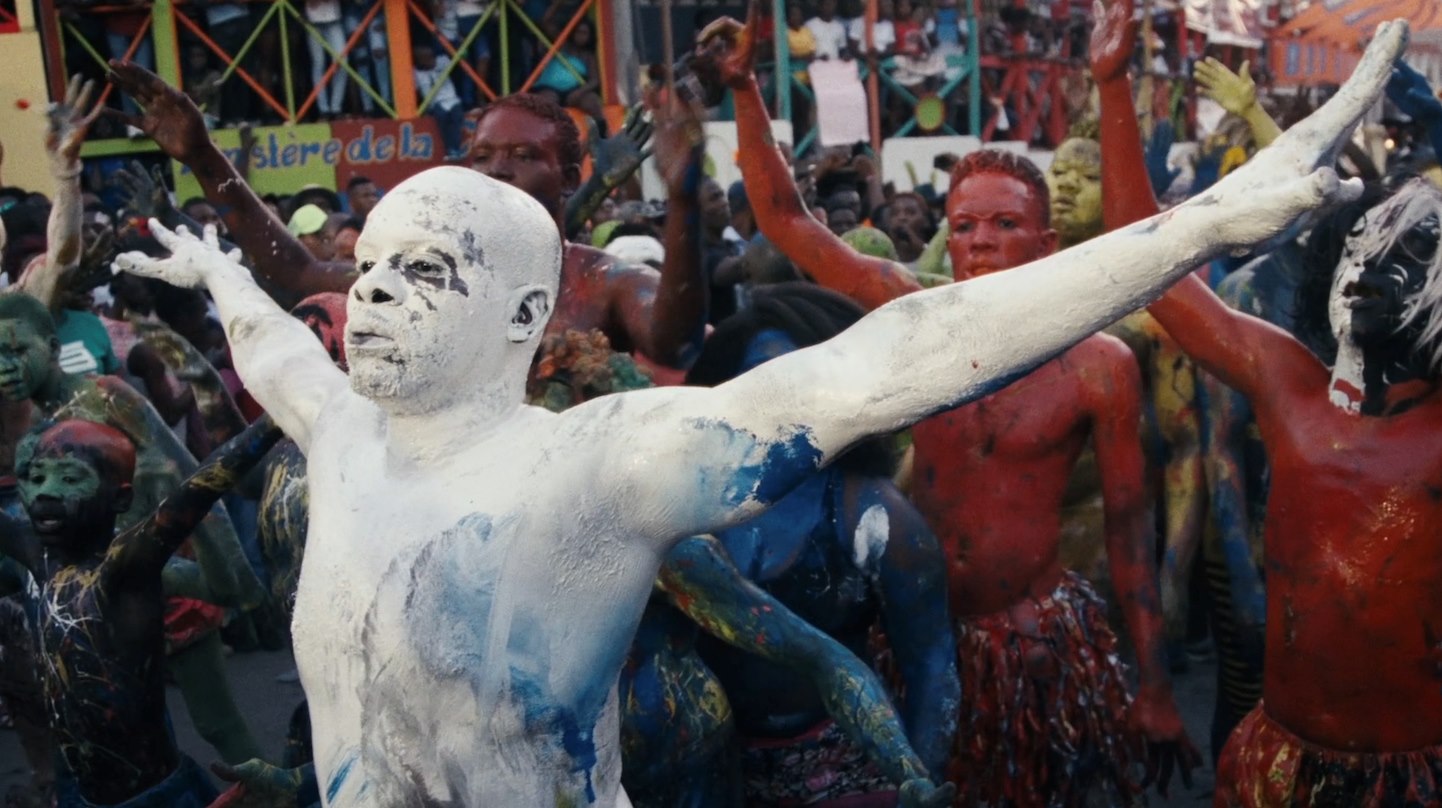Kite Zo A: Leave the Bones
(Canada/Haiti, 70 min.)
Dir. Kaveh Nabatian
“Our history is long and has no end,” poet Wood-Jerry Gabriel says in voiceover in Kite Zo A. “We invent dreams to cheat life.”
Life is but a dream in Kite Zo A. This hypnotic reverie of a film transports audiences to Haiti for a truly cinematic experience. The film explores the history of colonialism, the influence of voodoo, and the spirit that buoys a nation, all with an air of visual poetry.
Directed, shot, and edited by Kaveh Nabatian, this double Canadian Screen Award nominee doesn’t take a traditional approach to history. Instead, the culture of Haiti comes vibrantly alive through a tapestry of dance, music, poetry, and performance. Vignettes with participants like Louis Lesly Marcelin and Luckson Hyppolite recount Haitian history with the verve of spoken word poetry. Performers including Gerald Joanis and Jasmin Anis tell stories of survival and Black life through dance. Jean-François Augustin and young Anderson Widner Augustin, meanwhile, share the rhythms and traditions of Carnival. While Kite Zo A recounts a tumultuous history, the beats of Carnival evoke the resilient spirit through which dreams let Haitians “cheat life.”
Kite Zo A doesn’t follow a linear path. Instead, it floats episodically alongside the history that the artists conjure through their stories. Picturesque landscapes show the skeleton of the half-island nation. Jagged white rocks jut out from earth while kids zip around the rugged shores. Nabatian’s camera weaves dreamlike through the landscape, embracing the mythical and spiritual qualities of the stories that refuse to let history be tethered.
Even when Kite Zo A favours straightforward cinema vérité, it sidesteps the conventional. One sequence, for example, recalls the introduction of rollerblades to Haitian flea markets. Nobody really knew what they were, one participant says, but Haitian innovation soon had islanders whizzing down the streets, as evoked by Nabatian’s kinetic images that flow dynamically across the screen. Sure, there were accidents, deaths, and near-misses, but the skates’ ability to let Haitians take flight trumped any sense of tragedy.
There’s a sense of constant motion in Kite Zo A, be it the camera or the performers on screen. While Gabriel’s narration frequently evokes the past, the images have propulsive energy: these stories use history to move forward.
The power of voodoo in particular casts a spell over the documentary’s final act. Jean-François Augustin shares the moves and maquillage that one adopts for Carnival. Life and death do a macabre dance as baby powder and white paint cast ghostly palettes atop the Haitians on parade.
The meandering and restless nature of Kite Zo A, admittedly, may prove too taxing for some viewers. However, the film invites one to submit to the beats, and the dance between sound and image that creates the documentary’s singular experience. One can only truly make appreciate Kite Zo A by surrendering to its rhythms.












